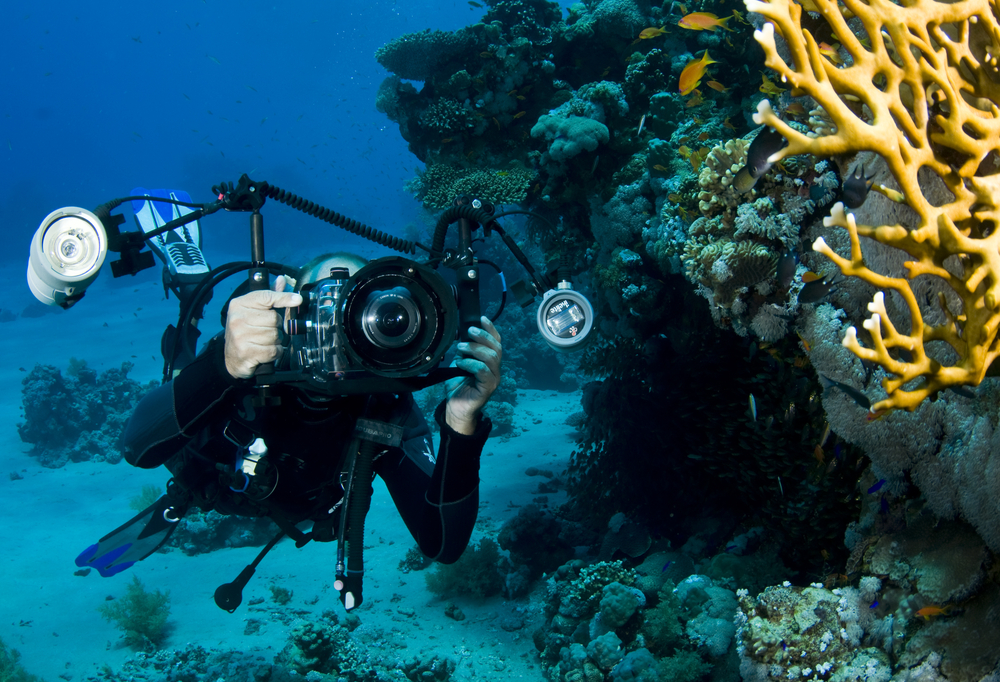Have you ever wanted to capture the amazing view when you go snorkeling or diving? Or are you frustrated by the limitations of your waterproof camera and left wondering how pros take those stunning images in dive magazine?
Taking photos underwater can be an exciting experience. There’s nothing like spending time in the underwater world, not only diving or snorkeling, but also capturing the different type of beauty that you cannot find on land. However the submarine environment poses some great challenges for photography. But it does not mean that you cannot master it.
We know that everybody has (and will have) their own first time when it comes to bring their gears underwater and capture the colorful subjects there. Check out the guide of underwater photography for beginners below:
Know how to dive well
The very first thing to keep in mind is that the foundation of underwater photography is good in-water skills, because you will need to get closer to your subjects and capture the subjects. If you haven’t mastered your diving skill, getting well-composed images can be challenging; or worse, you can be a threat to the environment (for example, bumping into the living coral reefs). Furthermore, underwater photography is exciting and a lot of fun, and when you’re enjoying it too much it will be easy to lose track of time, which can be dangerous because of limited air supply and decompression sickness.
Prepare the equipment
It is obvious that you cannot just grab any camera and go diving or snorkeling. Water alone isn’t the only consideration—pressure at various depths can cause even so-called waterproof models to get flooded. The average disposable underwater camera is good to about three meters, so if you plan on taking pictures while diving, you’re going to need something better.

We know that bringing a camera and its gears like huge lenses or lighting will not be convenience (and not recommended too), so finding a lightweight yet good camera is the safest way. Some recommended cameras for underwater photography are Sony RX 100 III, Canon S120, Sony A6000, or GoPro Hero 4. Do not forget the proper housing!
Move closer to your subjects
Whatever sizes your subjects is, the most important principle to remember when taking images or video underwater is that you need to shoot through a minimum of water. Water sucks out color from full spectrum light, so to get clear and bright colors you need to be right on top of your subjects. Get closer slowly to your subjects, breathing calmly and approaching with your camera already up.
Shoot the camera upwards
It is better to shoot upwards towards the surface to get the wider perspectives (more than just the sea bottom). If you aim your camera down, you are likely going to end up with a jumbled mess as your subject blends into the background of coral. Unless you really want to take the back side of your subjects (like sharks, cetaceans, or turtles against contrasting backgrounds), shooting upwards will isolate your subjects against the water column, thus creating better result.
Lighting
This is one of the biggest technical issues that you’ll need to overcome before dipping in for your first underwater photography session. Water blocks out sunlight, and it will stunt you on getting enough light to illuminate your subjects properly. If you’re snorkeling in bright sunlight in shallow, clear water then this isn’t likely to be much of an issue. However if you’re going deeper, using a flash will eliminate the blue saturation effect of water and render your subjects in bright, vibrant colors.
Macro mode
This is a very popular setting for underwater photography, since so many objects have wonderful textures that can be greatly highlighted with macro photography. Macro mode gives you a range of about 2 inches to 2 feet (you can check your camera manual), allowing for sharp, clear pictures when used up close. For beginners, macro mode offers a simple way to take quick, high-quality pictures.
General advice
If you’re going to be diving and will be bringing a camera (and its gears), make sure to let the dive center know in advance that you’ll need a bucket of fresh water for a camera. Before placing the camera in its housing, make sure to check the sealed housing to ensure it isn’t leaking.







